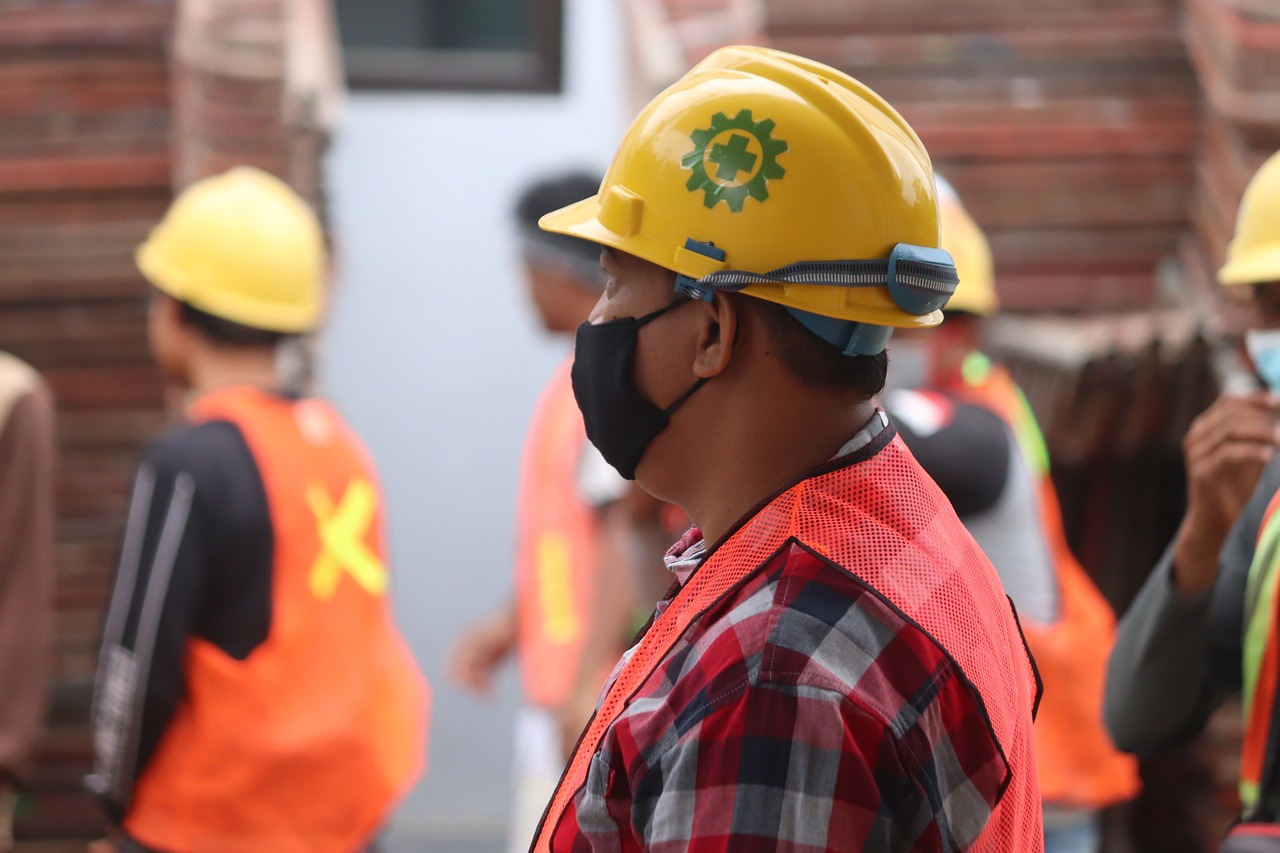Understanding Human Behavior to Ensure Comprehensive Safety
In today's world, the importance of safety cannot be overstated. Whether at home, in the workplace, or on the road, the decisions we make and the actions we take can significantly impact our safety and that of others. But have you ever stopped to think about what drives these decisions? Understanding human behavior is crucial to ensuring comprehensive safety. It’s not just about rules and regulations; it’s about the psychology behind our actions. By delving into the intricacies of human behavior, we can uncover insights that lead to improved safety protocols and environments.
Imagine a scenario where a worker neglects to wear protective gear because they believe “it won't happen to me.” This mindset, often rooted in personal experiences and societal influences, highlights the need for a deeper understanding of why people behave the way they do in safety-critical situations. When we explore the psychology of safety, we uncover layers of fear, risk assessment, and past experiences that shape our perceptions. For instance, someone who has previously experienced a workplace accident may approach safety with heightened caution, while another who has not may exhibit a more relaxed attitude. This variance in behavior can lead to discrepancies in safety outcomes, which is why understanding these psychological factors is paramount.
Furthermore, cultural influences play a significant role in shaping safety behavior. Different cultural backgrounds can lead to varying attitudes toward risk and compliance with safety regulations. For example, in some cultures, there may be a strong emphasis on individualism, which could lead to a reluctance to follow group safety protocols. In contrast, cultures that prioritize collectivism may encourage adherence to safety measures as a communal responsibility. Recognizing these cultural dynamics can help organizations tailor their safety programs to resonate more effectively with their diverse workforce.
Group dynamics also significantly impact safety outcomes. Have you ever noticed how people behave differently in a group compared to when they're alone? This phenomenon can be attributed to peer pressure, teamwork, and groupthink, all of which can influence individual actions and decision-making in safety-related contexts. For instance, if a team member observes their peers disregarding a safety protocol, they may feel compelled to follow suit, even if they recognize the potential risks. Understanding these group behaviors is essential for creating environments where safety is prioritized collectively.
Effective leadership is another critical component in fostering a safety culture. Leaders set the tone for their teams, and their attitudes toward safety can significantly influence behaviors and attitudes among team members. Through clear communication, accountability, and leading by example, leaders can cultivate an environment where safety is seen as a shared responsibility. When leaders prioritize safety, it sends a powerful message that encourages everyone to adopt similar values.
To enhance team safety, organizations can implement practical strategies that promote collaboration and open communication. Regular safety meetings, training sessions, and team-building exercises can help reinforce the importance of safety and encourage team members to share their insights and concerns. By fostering a culture of open dialogue, organizations can identify potential hazards and develop proactive measures to mitigate risks before they escalate.
Individual responsibility also plays a crucial role in enhancing safety. Each person must recognize their accountability in maintaining a safe environment. Personal accountability and proactive behavior contribute significantly to overall safety in various settings. When individuals take ownership of their actions, they are more likely to adhere to safety protocols and encourage others to do the same.
In conclusion, understanding human behavior is vital for ensuring comprehensive safety. By examining the psychological factors, cultural influences, group dynamics, and the impact of leadership, we can develop more effective safety protocols that resonate with individuals at all levels. As we continue to explore the complexities of human behavior, we can create safer environments that protect everyone.
- What is the role of psychology in safety? Psychology helps us understand how fear, past experiences, and risk assessment influence our safety-related decisions.
- How do cultural factors affect safety behavior? Cultural norms shape attitudes toward risk and compliance, leading to differing behaviors in safety-critical situations.
- Why is leadership important in safety culture? Leaders influence team attitudes and behaviors toward safety through communication and accountability.
- What can organizations do to improve team safety? Implementing regular training, fostering open communication, and encouraging collaboration can enhance team dynamics and safety culture.
- How does individual responsibility impact safety? Personal accountability and proactive behavior are key to maintaining a safe environment and encouraging others to follow suit.

The Psychology of Safety
Understanding the psychology of safety is crucial for creating effective safety protocols that resonate with individuals on a personal level. At its core, safety is not just about rules and regulations; it’s about how people perceive risks and make decisions in the face of potential danger. Imagine walking through a dimly lit alley at night. Your heart races, and your mind fills with thoughts of what could go wrong. This is a perfect example of how fear can influence our behavior and decision-making processes.
One key psychological factor that shapes our perception of safety is risk assessment. Each person evaluates risks differently based on their own experiences and knowledge. For instance, someone who has been in a car accident may be extra cautious while driving, while another who has never faced such an incident might take more liberties with speed limits. Our past experiences act as a lens through which we view current situations, often leading us to either overestimate or underestimate the dangers we face.
Additionally, the concept of cognitive biases plays a significant role in safety behavior. These biases can distort our perception of reality, leading to poor decision-making. For example, the optimism bias may cause individuals to believe that accidents are less likely to happen to them compared to others. This can result in risky behaviors, such as neglecting safety gear or skipping safety protocols. Understanding these biases is essential for developing interventions that promote safer behaviors.
Moreover, psychological factors such as stress and anxiety can significantly impact how individuals respond in safety-critical situations. High levels of stress can impair judgment and hinder performance, making it difficult for individuals to react appropriately during emergencies. On the other hand, a calm and collected mindset can enhance one’s ability to assess risks and respond effectively. Therefore, fostering a supportive environment that minimizes stress and encourages open communication can greatly enhance safety outcomes.
In summary, the psychology of safety is a multifaceted area that encompasses fear, risk assessment, cognitive biases, and emotional states. By understanding these elements, organizations can create safety protocols that are not only effective but also resonate with individuals on a deeper level. This understanding can lead to a culture where safety is prioritized, and individuals feel empowered to take responsibility for their own and others' safety.
- What is the role of fear in safety behavior?
Fear can significantly influence how individuals assess risks and make decisions in potentially dangerous situations. - How do past experiences affect risk assessment?
Individuals often base their perception of risk on previous experiences, which can lead to either heightened caution or unnecessary risk-taking. - What are cognitive biases?
Cognitive biases are mental shortcuts that can lead to distorted perceptions and poor decision-making regarding safety. - How does stress impact safety performance?
High levels of stress can impair judgment and hinder effective responses during emergencies, while a calm mindset can enhance performance.

When we think about safety, it’s easy to assume that everyone perceives and reacts to safety measures in the same way. However, the truth is far more complex. Cultural influences play a pivotal role in shaping how individuals and groups approach safety behavior. Different cultures have unique beliefs, values, and norms that significantly affect their attitudes toward risk and compliance with safety regulations.
For instance, in some cultures, there is a strong emphasis on individualism, where personal responsibility and self-reliance are valued. In such environments, individuals may take initiative to ensure their own safety, often leading to proactive behaviors. On the other hand, collectivist cultures may prioritize group harmony and conformity, which can sometimes result in individuals overlooking safety protocols if it disrupts group cohesion. This dichotomy can lead to a fascinating array of safety behaviors depending on the cultural context.
Moreover, the historical context of a culture can also shape its safety behavior. For example, in regions that have experienced significant industrial accidents or natural disasters, there may be a heightened awareness and adherence to safety measures. Conversely, cultures that have not faced such challenges might exhibit a more relaxed approach to safety, believing that risks are minimal.
To illustrate these differences, consider the following table that summarizes various cultural attitudes toward safety:
| Cultural Context | Safety Attitude | Example Behaviors |
|---|---|---|
| Individualistic Cultures | Proactive | Self-checking safety gear, taking personal initiative |
| Collectivist Cultures | Conformist | Following group decisions, prioritizing team over individual safety |
| High-risk History | Vigilant | Strict adherence to safety protocols, frequent training sessions |
| Low-risk History | Relaxed | Occasional safety checks, lower compliance with regulations |
In addition to these factors, language and communication styles also play a crucial role in how safety messages are conveyed and understood. Cultures that value direct communication may have clearer safety protocols, while those that prefer indirect communication might lead to misunderstandings about safety expectations. This can create gaps in safety compliance, as individuals may not fully grasp the importance of certain safety measures.
Furthermore, rituals and traditions within a culture can also influence safety behavior. For example, in some cultures, there are traditional practices that may inadvertently compromise safety, such as certain celebrations or events that involve risky behaviors. Understanding these cultural nuances is essential for developing effective safety programs that resonate with individuals from diverse backgrounds.
In conclusion, recognizing the cultural influences on safety behavior is vital for organizations aiming to foster a safe environment. By appreciating the diverse perspectives that different cultures bring, companies can tailor their safety protocols to be more inclusive, effective, and ultimately, safer for everyone involved. As we move forward, it is crucial to engage in open dialogues about safety across cultures, ensuring that every voice is heard and every concern is addressed.
- How do cultural differences affect safety training? Cultural differences can impact how individuals absorb and respond to safety training, necessitating tailored approaches to accommodate various learning styles.
- What role does language play in safety communication? Language can create barriers in understanding safety messages, making it essential to use clear, simple language and visual aids to enhance comprehension.
- Can cultural attitudes toward safety change over time? Yes, cultural attitudes can evolve, especially as societies face new challenges and experiences that reshape their views on safety.

When we think about safety, we often picture individuals acting alone, but the reality is that group dynamics play a pivotal role in shaping safety outcomes. Imagine a team working together on a construction site. Each member's actions and decisions can significantly impact not just their own safety, but also that of their colleagues. This interconnectedness means that understanding how groups behave is crucial for creating effective safety protocols.
One of the most fascinating aspects of group dynamics is the influence of peer pressure. In a safety-critical environment, individuals may feel compelled to conform to the behaviors of their peers, even if those behaviors are unsafe. For example, if one team member decides to skip wearing protective gear, others might follow suit, believing that it’s acceptable. This phenomenon highlights the importance of fostering a culture where safety is prioritized, and individuals feel empowered to speak up against unsafe practices.
Moreover, groupthink can be a significant barrier to safety. When a team becomes too cohesive, they may overlook potential risks or fail to consider alternative viewpoints. This can lead to catastrophic outcomes, especially in high-stakes situations where every decision counts. To combat this, organizations should encourage open dialogue and diverse perspectives within teams. By creating an environment where all voices are heard, teams can make more informed decisions that enhance safety.
Additionally, teamwork itself can be a double-edged sword. On one hand, effective collaboration can lead to innovative safety solutions and a shared sense of responsibility. On the other hand, if team dynamics are poor, it can result in confusion and miscommunication, ultimately compromising safety. It’s essential for leaders to recognize the state of group dynamics and actively work to cultivate a positive team environment where safety is a collective goal.
To illustrate the impact of group dynamics on safety, consider the following table that summarizes key factors:
| Factor | Impact on Safety |
|---|---|
| Peer Pressure | Can lead to unsafe behaviors if individuals conform to group norms. |
| Groupthink | May cause teams to overlook risks and make poor safety decisions. |
| Effective Communication | Enhances awareness of safety protocols and encourages reporting of unsafe practices. |
| Team Cohesion | Can foster a shared responsibility for safety but may also lead to complacency. |
In conclusion, understanding group dynamics is essential for ensuring safety in any environment. It’s not just about individual actions; it’s about how those actions interact within a group. By fostering a culture that values safety and encourages open communication, organizations can enhance their safety protocols and ultimately save lives.
- How can organizations improve group dynamics for better safety? Organizations can improve group dynamics by promoting open communication, encouraging diverse perspectives, and providing team-building activities focused on safety.
- What role does leadership play in group dynamics and safety? Leadership is crucial in setting the tone for safety culture, guiding teams in effective communication, and ensuring that safety is a shared responsibility.
- Can training programs help mitigate the risks associated with groupthink? Yes, training programs that emphasize critical thinking and encourage questioning can help teams avoid the pitfalls of groupthink.

Leadership plays a pivotal role in shaping the safety culture within any organization. When leaders prioritize safety, they set a tone that resonates throughout the entire workforce. Think of it as the captain of a ship; if the captain is vigilant and proactive about navigating through stormy seas, the crew is more likely to follow suit, ensuring that everyone remains safe and sound. Conversely, a lackadaisical attitude from leadership can lead to a culture where safety is merely an afterthought, putting everyone at risk.
Effective leaders communicate a clear vision of safety, emphasizing its importance in daily operations. They do this through regular meetings, training sessions, and by establishing safety as a core value within the organization. When leaders openly discuss safety concerns and encourage feedback, they create an environment where employees feel valued and empowered to voice their opinions. This two-way communication fosters a sense of ownership among team members, making them more likely to adhere to safety protocols.
Moreover, accountability is another crucial aspect of leadership in safety culture. Leaders must not only model safe behaviors themselves but also hold others accountable for their actions. This creates a ripple effect; when employees see their leaders taking safety seriously, they are more inclined to do the same. It's like a chain reaction—one positive action leads to another, ultimately cultivating a robust safety culture.
In addition to communication and accountability, recognition plays a significant role in reinforcing safe behaviors. Leaders should celebrate safety milestones and acknowledge individuals or teams who demonstrate exceptional commitment to safety practices. This recognition not only boosts morale but also incentivizes others to follow suit. It's akin to rewarding a child for good behavior; it encourages them to continue making safe choices.
To better understand the impact of leadership on safety culture, consider the following table that outlines key leadership behaviors and their effects on safety:
| Leadership Behavior | Effect on Safety Culture |
|---|---|
| Open Communication | Encourages transparency and trust among team members. |
| Modeling Safe Behavior | Sets a standard for employees to emulate. |
| Accountability | Promotes responsibility for safety at all levels. |
| Recognition and Rewards | Motivates employees to prioritize safety. |
In conclusion, the impact of leadership on safety culture cannot be overstated. Leaders who actively engage in promoting safety, communicate effectively, model safe behaviors, and recognize their team's efforts lay the groundwork for a safe working environment. By doing so, they not only protect their employees but also enhance overall productivity and morale. After all, a safe workplace is a happy workplace, and that’s a win-win for everyone involved!
- What is the role of leadership in promoting safety culture?
Leadership sets the tone for safety culture through communication, accountability, and recognition of safe behaviors. - How can leaders effectively communicate safety protocols?
Leaders can hold regular meetings, training sessions, and encourage open dialogue to ensure that safety protocols are understood and followed. - Why is recognition important in safety culture?
Recognition motivates employees to prioritize safety and reinforces the importance of safe practices within the organization.

Enhancing team safety is not just about implementing rules and regulations; it’s about creating an environment where every member feels valued and responsible for their own safety and that of their colleagues. One effective strategy is to foster open communication. When team members feel comfortable sharing their concerns and suggestions, it creates a culture of safety where everyone is engaged in the process. Imagine a workplace where employees are empowered to speak up about potential hazards without fear of retribution. This kind of environment not only boosts morale but also significantly reduces the risk of accidents.
Another crucial strategy is regular training and drills. These activities keep safety protocols fresh in everyone’s mind and ensure that team members know exactly what to do in case of an emergency. It’s like practicing for a big game; the more you rehearse, the better prepared you are when it counts. Consider implementing monthly safety meetings where you can review procedures, discuss past incidents, and brainstorm improvements. This not only keeps safety at the forefront but also encourages collaboration and team bonding.
Additionally, recognizing and rewarding safe behavior can be a powerful motivator. When employees see that their efforts to maintain a safe work environment are acknowledged, they are more likely to continue those behaviors. You might set up a recognition program where team members can nominate their peers for demonstrating exceptional safety practices. This not only promotes safe behaviors but also strengthens team relationships, as individuals feel appreciated and valued.
Moreover, utilizing technology can significantly enhance safety measures. Tools like safety apps or wearables can monitor conditions and alert teams about potential hazards in real-time. For instance, a safety app can provide instant access to safety protocols, incident reporting, and emergency contacts. By integrating technology into your safety strategy, you can create a more responsive and informed team.
Lastly, it’s essential to lead by example. Leadership plays a pivotal role in shaping safety culture. When leaders prioritize safety and demonstrate their commitment through actions—like participating in safety drills or adhering to safety protocols—team members are more likely to follow suit. It’s like a domino effect; one person’s commitment can inspire others to take safety seriously as well.
In summary, enhancing team safety requires a multifaceted approach that combines open communication, regular training, recognition of safe behaviors, the use of technology, and strong leadership. By implementing these strategies, organizations can create a robust safety culture that not only protects employees but also fosters a sense of belonging and teamwork.
- What is the most effective way to improve team safety?
Open communication and regular training are key to enhancing team safety. - How can technology help in promoting safety?
Technology can provide real-time monitoring and access to safety protocols, making it easier for teams to stay informed. - Why is leadership important in safety culture?
Leaders set the tone for safety practices, and their commitment can inspire team members to prioritize safety. - What role does recognition play in safety?
Recognizing safe behaviors encourages employees to continue those practices and fosters a positive safety culture.

When we talk about safety, one of the most critical aspects that often gets overlooked is individual responsibility. You see, safety isn't just a top-down approach where management sets the rules and employees follow them blindly. Instead, it’s a shared journey where each person plays a pivotal role in creating a safer environment. Think about it: if everyone takes ownership of their actions, the collective impact can be monumental. But how do we foster this sense of responsibility?
First and foremost, it’s essential to understand that individual actions can significantly influence overall safety. For instance, when someone neglects to wear their personal protective equipment (PPE), it's not just a personal choice; it can set off a chain reaction that affects their colleagues. This is why personal accountability is paramount. Each person must recognize that their decisions can either contribute to or detract from the safety of the entire team.
Moreover, fostering a culture of safety starts with open communication. When employees feel comfortable voicing their concerns or suggesting improvements, they are more likely to take responsibility for their safety and that of others. It’s like being part of a team where everyone is encouraged to speak up. Imagine a football game where players are afraid to call out for the ball; the chances of scoring a goal diminish. Similarly, in a workplace, if individuals don’t feel empowered to discuss safety issues, the potential for accidents increases.
To promote individual responsibility, organizations can implement various strategies. These may include:
- Training and Workshops: Regular training sessions can empower employees with the knowledge they need to act safely.
- Recognition Programs: Acknowledging individuals who consistently prioritize safety can motivate others to follow suit.
- Feedback Mechanisms: Providing avenues for employees to share their experiences can help identify areas for improvement.
In addition, it’s crucial to instill a sense of ownership among team members. When individuals feel that they have a stake in the safety protocols, they are more likely to adhere to them. This sense of ownership can be cultivated through team-building activities that emphasize collaboration and mutual support. By working together, team members can create a robust safety net where everyone watches out for one another.
Another important aspect is the role of self-awareness. Individuals must regularly assess their behavior and its impact on safety. This might involve asking themselves questions like, “Am I following the safety protocols?” or “How can I improve my work habits to ensure a safer environment?” This kind of reflection can lead to proactive behaviors that enhance overall safety.
In conclusion, individual responsibility in safety is not just a concept; it’s a crucial element that can make or break a safety culture. By fostering accountability, promoting open communication, and encouraging self-awareness, organizations can create an environment where safety is everyone’s priority. Remember, safety is a collective effort, and every small action counts towards building a safer workplace.
Q1: Why is individual responsibility important in safety?
A1: Individual responsibility is vital because each person's actions can significantly impact the safety of the entire team. When everyone takes ownership of their safety practices, it leads to a safer work environment.
Q2: How can organizations promote individual responsibility?
A2: Organizations can promote responsibility through training, recognition programs, and open communication channels that encourage employees to voice safety concerns and suggestions.
Q3: What role does self-awareness play in safety?
A3: Self-awareness helps individuals evaluate their behaviors and decisions regarding safety, leading to more proactive and responsible actions in the workplace.

Behavioral safety programs are designed to address the often-overlooked aspect of workplace safety: human behavior. These programs focus on changing unsafe behaviors through observation, feedback, and reinforcement, rather than merely relying on rules and regulations. The premise is simple yet powerful: if you can influence how people behave, you can significantly reduce accidents and incidents in the workplace. Imagine a scenario where every employee feels empowered to speak up about unsafe practices; this is the essence of a successful behavioral safety program.
At the heart of behavioral safety programs is the concept of behavioral observation. This involves trained observers monitoring employees in their work environment, identifying both safe and unsafe behaviors. The goal is not to catch people doing things wrong but to provide constructive feedback that encourages safe practices. For instance, if an employee is observed wearing their safety gear correctly, they receive positive reinforcement. Conversely, if someone is seen neglecting safety protocols, the observer can engage in a supportive discussion about the risks involved.
One of the key elements that make these programs effective is the establishment of a feedback loop. This means that employees not only receive feedback on their behaviors but also contribute to the program's development. By involving employees in the process, organizations foster a sense of ownership and accountability. This collaborative approach can lead to a more profound cultural shift towards safety. When people feel that their opinions matter, they are more likely to engage actively in safety initiatives.
Measuring the effectiveness of behavioral safety programs is crucial. Organizations often use various metrics to evaluate their success, such as incident rates, near-miss reports, and employee engagement levels. A well-structured program will show a decline in incidents over time, indicating that unsafe behaviors are being addressed effectively. However, it’s important to note that these programs require ongoing commitment and adaptation. Regular assessments and updates based on feedback help ensure that the program remains relevant and effective.
| Metric | Purpose | Expected Outcome |
|---|---|---|
| Incident Rate | Tracks the number of accidents over time | Decrease in incidents |
| Near-Miss Reports | Identifies potential hazards before they cause harm | Increased reporting and awareness |
| Employee Engagement | Measures participation in safety programs | Higher involvement and ownership |
Despite their numerous benefits, implementing behavioral safety programs is not without challenges. Organizations may encounter resistance from employees who are skeptical about the effectiveness of such initiatives. Moreover, the initial investment in training and resources can be daunting for some businesses. However, overcoming these obstacles is essential for fostering a genuine culture of safety. Open communication, addressing concerns, and demonstrating the program's value through success stories can help ease resistance and encourage participation.
In conclusion, behavioral safety programs represent a proactive approach to workplace safety. By focusing on the human element, these programs not only reduce incidents but also enhance overall employee morale and engagement. When employees feel safe and valued, they are more likely to contribute positively to the organization, creating a win-win situation for everyone involved.
- What are behavioral safety programs? Behavioral safety programs are initiatives aimed at changing unsafe behaviors in the workplace through observation, feedback, and positive reinforcement.
- How do these programs improve safety? By focusing on human behavior, these programs encourage employees to adopt safer practices and foster a culture of accountability and engagement.
- What metrics are used to evaluate the success of these programs? Common metrics include incident rates, near-miss reports, and employee engagement levels.
- What challenges might organizations face when implementing these programs? Organizations may encounter resistance from employees and the initial investment in training and resources may be significant.

Evaluating the success of behavioral safety initiatives is crucial in determining their effectiveness in enhancing workplace safety. Just like a mechanic checks a car’s engine to ensure it runs smoothly, organizations must assess these programs to identify areas for improvement and ensure they are achieving their intended goals. The evaluation process often involves a combination of qualitative and quantitative metrics that provide insights into how well safety behaviors are being adopted and maintained.
One of the most effective ways to evaluate these initiatives is through the use of key performance indicators (KPIs). These indicators can include:
- Incident and accident rates before and after program implementation
- Employee participation rates in safety training and meetings
- Observations of safety behaviors in the workplace
- Feedback from employees regarding their perceptions of safety culture
By tracking these metrics, organizations can gain a clearer picture of how well their behavioral safety initiatives are performing. For instance, if the incident rate decreases significantly after a program is introduced, it’s a strong indicator that the initiative is having a positive impact. However, it’s essential to look beyond just numbers. The stories behind those numbers—like how employees feel about safety practices—are equally important.
Another valuable method for evaluating these initiatives is through employee surveys. Surveys can be designed to gather feedback on various aspects of the safety program, such as:
- Awareness of safety protocols
- Perceived effectiveness of safety training
- Willingness to report unsafe behaviors
These insights can help organizations understand the psychological factors that influence safety behavior. For example, if employees report feeling unsafe or unsure about safety protocols, it might indicate a need for more comprehensive training or clearer communication from leadership.
Moreover, conducting regular observational audits can provide real-time data on safety behaviors in action. Trained observers can monitor work environments and note how often safe practices are followed versus unsafe ones. This method not only helps in evaluating the effectiveness of the safety programs but also reinforces the importance of safety in the workplace.
To visualize the impact of behavioral safety initiatives, organizations may also consider creating a
| Year | Incident Rate | Employee Participation (%) | Safety Training Feedback Score |
|---|---|---|---|
| 2020 | 12 | 65 | 3.5 |
| 2021 | 8 | 75 | 4.0 |
| 2022 | 5 | 85 | 4.5 |
This table illustrates a positive trend in safety metrics, suggesting that the behavioral safety initiatives are making a measurable difference. However, it’s essential to remember that continuous evaluation is key. Safety is not a one-time effort but an ongoing commitment that requires regular reassessment and adaptation to new challenges.
In conclusion, evaluating behavioral safety initiatives involves a blend of quantitative metrics and qualitative insights. By leveraging KPIs, employee feedback, and observational audits, organizations can create a comprehensive picture of their safety culture. This ongoing evaluation not only highlights successes but also uncovers areas for improvement, ensuring that safety remains a top priority in the workplace.
Q1: What are behavioral safety initiatives?
A1: Behavioral safety initiatives are programs designed to encourage safe behaviors among employees and reduce workplace incidents through training, observation, and feedback.
Q2: How can I measure the success of a behavioral safety program?
A2: Success can be measured through key performance indicators such as incident rates, employee participation in safety training, and feedback from employee surveys.
Q3: Why is employee feedback important in evaluating safety programs?
A3: Employee feedback provides insights into their perceptions of safety culture and helps identify areas where additional training or communication may be needed.

Implementing safety programs in any organization is akin to trying to steer a massive ship through turbulent waters. There are numerous challenges that can arise, often making the journey more complex than it initially seems. First and foremost, one of the significant hurdles is employee resistance. Change is often met with skepticism, and when it comes to safety, employees may feel that new protocols infringe on their autonomy or complicate their daily tasks. It's crucial to address these concerns early on, fostering an environment where employees feel heard and valued.
Another challenge is the lack of management support. If leadership does not prioritize safety or visibly participate in safety initiatives, it can send a message that safety is not a core value. This can lead to a culture where safety is seen as an afterthought rather than a fundamental aspect of operations. In fact, a study found that organizations with strong leadership involvement in safety programs see a significant reduction in workplace incidents. Therefore, it is essential for leaders to not only endorse safety measures but to actively engage with them.
Additionally, the inadequate training and resources can severely hamper the effectiveness of safety programs. Employees need proper training to understand the protocols and why they are important. Without this training, even the best safety measures can fall flat. Providing resources, such as easy access to safety equipment and clear guidelines, is vital. Organizations should invest in comprehensive training sessions that not only teach the technical aspects of safety but also emphasize the importance of a safety-first mindset.
Furthermore, the dynamic nature of workplaces can complicate the implementation of safety programs. As businesses evolve, so do the risks associated with them. New equipment, processes, and personnel can introduce unforeseen hazards. This means that safety programs must be adaptable and regularly updated to reflect the current operational landscape. Regular assessments and feedback loops can help ensure that safety protocols evolve alongside the organization.
Lastly, measuring the success of safety programs can be a daunting task. Organizations often struggle with quantifying safety outcomes and determining the effectiveness of their initiatives. Metrics such as incident rates and employee feedback are essential, but they can sometimes paint an incomplete picture. Developing a comprehensive evaluation strategy that includes both quantitative and qualitative data is crucial for understanding the true impact of safety programs.
In summary, while the challenges of implementing safety programs can be significant, they are not insurmountable. By fostering open communication, securing management support, providing adequate training, adapting to workplace changes, and developing robust evaluation methods, organizations can create a safer environment for all employees. Remember, safety is not just a set of rules; it's a culture that requires continuous effort and commitment.
- What are the most common challenges in implementing safety programs?
Common challenges include employee resistance, lack of management support, inadequate training, dynamic workplace environments, and difficulties in measuring success. - How can management support improve safety programs?
When management actively participates in safety initiatives, it sends a strong message that safety is a priority, leading to better compliance and a stronger safety culture. - Why is employee training important for safety programs?
Training ensures that employees understand safety protocols and the importance of following them, which can significantly reduce workplace incidents. - How can organizations measure the success of their safety programs?
Success can be measured through incident rates, employee feedback, and regular assessments of safety protocols to ensure they are effective and relevant.
Frequently Asked Questions
- What is the psychology behind safety behavior?
The psychology of safety behavior delves into how our thoughts and feelings influence our actions in safety-critical situations. Factors like fear, risk assessment, and past experiences play a huge role in how we perceive safety. For instance, if someone has previously experienced an accident, they may be more cautious in similar situations.
- How do cultural influences affect safety behavior?
Cultural norms can shape our attitudes toward risk and compliance with safety regulations. Different cultures may have varying perceptions of what constitutes safe behavior, which can lead to significant differences in safety practices across regions. Understanding these cultural influences is essential for developing effective safety protocols.
- What role do group dynamics play in safety?
Group dynamics significantly impact safety outcomes. Teamwork, peer pressure, and groupthink can lead individuals to conform to unsafe practices or, conversely, promote a culture of safety. Recognizing these dynamics is crucial for fostering an environment where safety is prioritized over conformity.
- How does leadership influence safety culture?
Effective leadership is vital for cultivating a strong safety culture. Leaders set the tone for safety by demonstrating accountability, encouraging open communication, and actively engaging with their teams. When leaders prioritize safety, it creates a ripple effect that influences the entire organization.
- What strategies can enhance team safety?
Improving team safety involves practical strategies such as promoting collaboration, encouraging open dialogue, and implementing regular safety training. By fostering an environment where team members feel comfortable discussing safety concerns, organizations can significantly enhance their safety culture.
- What is individual responsibility in safety?
Individual responsibility is crucial for enhancing safety in any environment. When individuals take personal accountability for their actions and proactively engage in safe practices, it contributes to the overall safety of the team and organization. This mindset helps to create a culture where everyone feels empowered to prioritize safety.
- What are behavioral safety programs?
Behavioral safety programs are initiatives designed to change unsafe behaviors by focusing on the actions of individuals rather than just the outcomes. These programs aim to promote safety awareness and reduce incidents through education, observation, and feedback, making them an essential component of a comprehensive safety strategy.
- How can we evaluate the success of behavioral safety initiatives?
Evaluating the success of behavioral safety initiatives involves analyzing specific metrics and methods, such as incident rates, employee feedback, and safety audits. By assessing these factors, organizations can determine the effectiveness of their programs and make necessary adjustments to improve safety outcomes.
- What challenges do organizations face when implementing safety programs?
Implementing safety programs can be challenging due to factors like resistance to change, lack of resources, and insufficient training. Organizations often need to navigate these obstacles by fostering a culture of safety, providing adequate training, and ensuring that all employees understand the importance of safety practices.



















